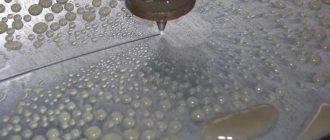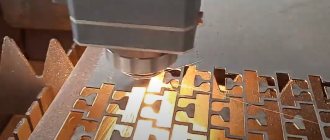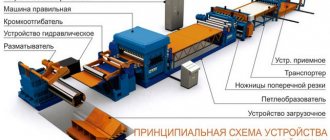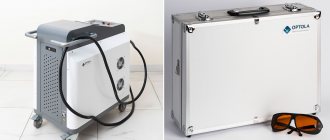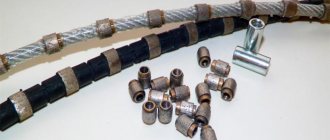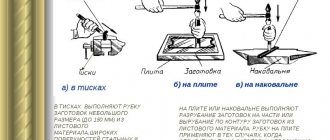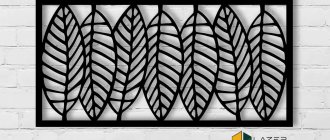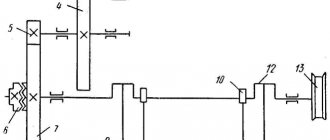Processing metals of various levels of hardness with high precision is possible using unconventional methods. These include cutting, grinding and strengthening the surface using electrical erosion. The electroerosive machine was invented quite a long time ago, but has become widespread only in recent decades.
The first industrial-grade machine was created by CHARMILLES TECHNOLOGIES in 1952, and the CNC EDM machine appeared in 1969. Compared to traditional methods of metal processing - forging, casting, grinding, milling, the electric spark method can be considered innovative. The first mentions of forged and cast products are several thousand years old.
Limits of application of electrical discharge machining
All metals are conductive substances, so electrical discharge machining is applicable to all types of alloys. With its help you can perform a wide range of work, ranging from ordinary cutting and drilling to:
- fine grinding;
- increasing the surface and restoring the configuration;
- hardening;
- copying;
- firmware;
- engraving;
- spraying.
Electroerosive equipment is based on the principle of the occurrence of a short-term electric arc, which leads to the loss of substance by the cathode and anode. With a short pulse, the substance is removed from the anode; with a longer pulse, the substance is removed from the cathode. Modern electroerosive machines use both types of pulses in their work. Both the working tool and the workpiece can be connected to the positive or negative pole.
EDM Capabilities
The only condition that is observed in all types of machines is that only direct current is used. The voltage level and current strength depend solely on the parameters of the metal being processed. The frequency of occurrence of pulses is determined by the mechanical approach and distance of the electrode and the working surface - breakdown occurs only at a certain distance between the contact surfaces.
Electric pulse processing of metals aimed at destroying the workpiece (cutting or drilling) is carried out in a dielectric medium, which is a special liquid. The most commonly used are oil, kerosene or distilled water. Surfacing, strengthening or spraying operations are performed in air or vacuum.
Principle of operation
In the process of using a wire cutting machine, brass wire is most often used as a cutting tool. It is performed using a unique technology, and the speed and accuracy of processing depends on its quality.
If a high-power high-frequency pulse generator built into the described machine is used, the brass wire is equipped with a special coating. Its structure has several layers:
- Base: CuZn40 (copper-zinc alloy) or brass. Molybdenum and copper can also be used.
- Thermal diffusion layer - zinc concentration more than 50%.
- The top layer is pure zinc.
Due to this structure, the wire has a number of advantages:
- Withstands high temperatures.
- The arc is stable during processing, and the formation of beads at the cut site is eliminated.
- Reduced wire consumption per cut length.
CNC wire EDM machines are used mainly in mass production. Single products do not justify the purchase of expensive equipment, but some parts can only be obtained with this type of cut. The zinc coating ensures the continuity of the automatic process by eliminating the shedding of brass from high-frequency currents.
Electrical discharge cutting of metal
This type of processing is used in cases where it is necessary to produce small-sized parts with complex contours with high precision edges, to produce parts from particularly hard alloys, and in jewelry.
Limitations on the size of workpieces and the thickness of the processed material are determined only by the design of a particular machine. In most cases, electrical discharge cutting is used in industrial enterprises focused on large-scale production of high-precision parts that do not require further processing. But without much difficulty, you can build an electrical discharge machine with your own hands, if you have some metalworking skills and a certain knowledge of electronics and electrical engineering. The design of a homemade electrical discharge cutting machine is simple and can be implemented even at home, not to mention in a metalworking workshop or workshop of a small enterprise.
But it should be taken into account that in home-made machines it is very difficult to realize the main advantages of electrical discharge machining - high accuracy and versatility. Refractory metals and alloys are cut very slowly and require high power consumption.
When cutting metal, the workpiece is connected to the positive pole of the current source, and the working electrode is connected to the negative pole. The loss of substance at the anode is nothing more than erosion, a cut, the thickness of which depends on the geometry of the cathode. The type of dielectric with which a certain type of EDM machine works also plays a big role.
For industrial production, two main types of equipment are used - wire EDM (cutting) and EDM piercing machine. The first type is used when processing large parts made of thick-walled metal, the second - for more precise work on copying parts made of high-strength materials or strict requirements for their shape.
Technological indicators
An electric spark installation, depending on the operating mode, can ensure the accuracy of the result within a wide range. If high performance is required with relatively low requirements for surface condition (class I and II), then currents of 10-60 A are used at voltages up to 220V. In this case, electric spark erosion can remove metal from the cutting or drilling zone in a volume of up to 300 mm3/min. With higher accuracy class values - VI and VII, productivity decreases to 20-30 mm3/min, but lower currents are required, no more than 1 A at voltages up to 40 V.
Such a wide range of adjustments shows that electric spark processing of metal can be used in various fields, both for the production of large series of parts and for one-time work, including jewelry.
A feature of the use of electric spark installations can be considered the ability to strengthen parts of various configurations. A thin layer of a stronger alloy or metal is applied to the surface of the workpiece without heating the base to a greater depth. This allows you to preserve the metal structure of the base product and significantly change the properties of its surface. In some cases, base viscosity and high surface hardness are required, or vice versa. Only an electric spark machine can solve this problem.
Wire cutting machines
The electroerosive industrial wire-cutting machine operates on the non-contact principle of interaction between a conductive wire (molybdenum, tungsten or other refractory metal) with a diameter of 0.1-0.2 mm and the workpiece.
You can process metal of any level of refractoriness in different thicknesses of the part. A positive pole is connected to the wire wound on rotating drums, which moves in two directions - vertically and towards the workpiece, and a negative pole is connected to the workpiece. As the wire line moves, a discharge occurs that burns a line of the required configuration into the part. In essence, electrical discharge machining on a wire machine performs milling operations, but on metals of special strength and with precision that is unattainable with mechanical processing. This includes:
- ultra-small angles;
- rounding of microdiameters;
- maintaining parallelism of lines throughout the entire depth;
- high precision edge surfaces.
The processing accuracy reaches 0.110-0.012 mm.
Advantages and disadvantages
Any method has its strengths and weaknesses . Main advantages of the technology:
- Arbitrary shape of the tool, the ability to create closed channels and cavities.
- Allows you to work with any conductive material.
- High degree of automation, low probability of defects due to the human factor.
- Precision processing and improved quality of the resulting surface compared to mechanical methods.
For all its advantages, the method also has very serious disadvantages. The two main disadvantages are:
- Low speed electrical discharge machining. In modern machines, the tool movement speed does not exceed 10 mm per second.
- Very high power consumption.
In terms of all its parameters, electroerosion is superior to many traditional metalworking methods, and in some cases has no alternative. Today, the scope of use of electrical erosion is very extensive.
Electroerosive piercing machines
Electric contact piercing processing of metals involves the action of a point electrode with a given cross-sectional shape, on which the shape of the erosion depression in the workpiece depends. They are used for processing:
- stainless steels;
- tool alloys;
- titanium;
- hardened steel.
But they can work with all types of conductive materials when it is necessary to make holes or recesses of great depth with a minimum diameter and precise cross-section geometry.
One of the most difficult operations of a piercing machine is the production of threaded holes in high-strength, refractory materials. In this case, only CNC machines are used. An electrode made of thin wire is inserted into the hole and moves in the longitudinal and transverse directions (along the X, Y axes, with simultaneous movement along the Z axis). The result is a hole with a complex wall configuration, threaded or other profile.
Electrical contact processing allows you to obtain high-precision impressions of stamps, molds or other small parts. In this case, the electrode is a miniature copy of the required product, made of copper or graphite. Depending on the polarity of the connection, clear depressions or equally clear protrusions are obtained on the workpiece. Such electroerosive machines are produced in both stationary and desktop versions (for example, G11 ARAMIS (Czech Republic)).
Design
The electroerosive wire cutting machine is equipped with plane-parallel motors. For this purpose, manufacturers create their own neodymium magnets (NdFeB - neodymium-iron-boron). In addition to them, a unique K-SMS control system was also required.
A classic wire-cut EDM machine is capable of processing only electrically conductive workpieces. Metals are burned through an arc to a considerable depth. A smooth surface remains at the cut site, often requiring no additional processing.
An electroerosive wire cutting machine helps to produce complex products: molds, strains, conical and cylindrical surfaces, protrusions and bevels. On sale you can find two-axis assemblies used for simple operations. More complex products are produced using five-axis machines.
Additional options
The buyer of an EDM machine can retrofit the equipment with the following options:
- Controlled position of the C axis. More often required for milling cylindrical workpieces.
- Turret head with additional degrees of tool freedom. Using this model, geometrically complex parts are obtained.
- The table may have additional axes. This option is used when processing cabinet products or several workpieces in one cycle.
The standard equipment includes working fluid purification systems that allow filtration with a quality of up to 3 microns. Contaminated cartridges have standard sizes and are replaced quite quickly.
Processing metals of various levels of hardness with high precision is possible using unconventional methods. These include cutting, grinding and strengthening the surface using electrical erosion. The electroerosive machine was invented quite a long time ago, but has become widespread only in recent decades.
